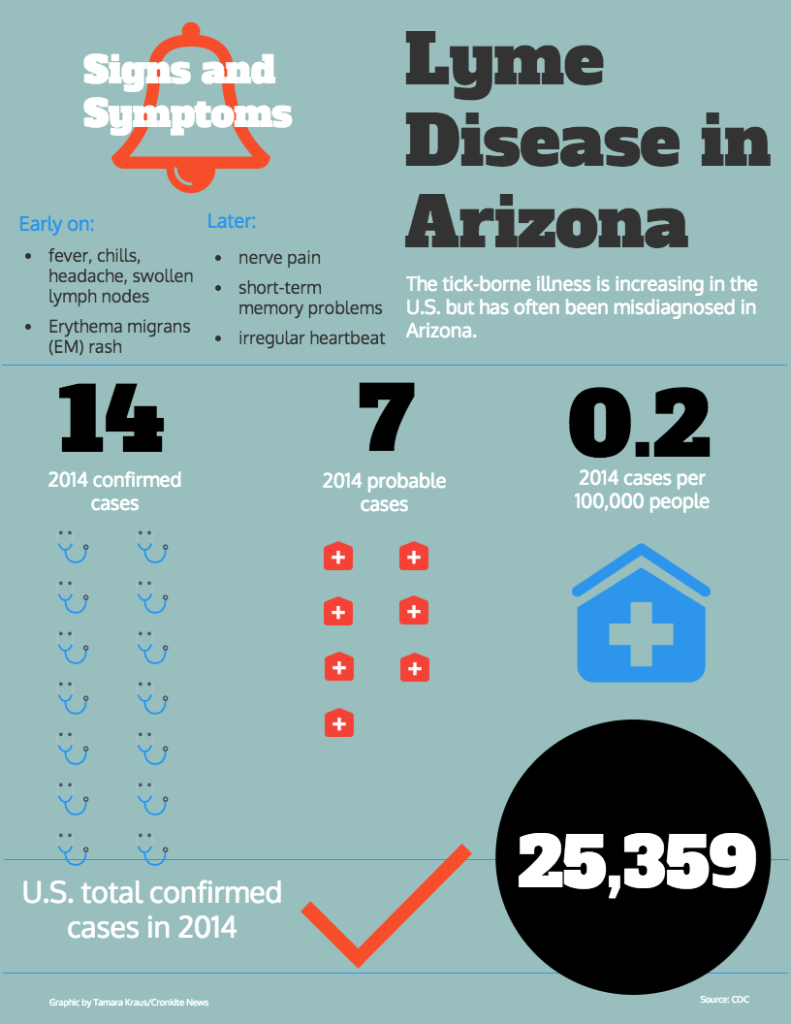SCOTTSDALE – Researchers said a new DNA detection method will better identify Lyme disease, a tick-born illness that is increasing in the United States.
Jessica Crawford, an Arizona resident who suffered from Lyme disease, said it plagued her.
“I had joint pain throughout my entire body, muscle stiffness so bad I could hardly take a deep breath. I had heart palpitations, insomnia, chronic fatigue,” Crawford said.
Phoenix’s TGen Research Institute is developing a blood test that would identify 20 species of Lyme disease and related infections, as well as monitor treatment progress.
“To be able to have for the very first time an accurate diagnostic tool, and a tool to be able to show your progress … it’s revolutionary and it’s going to change the face of Lyme disease,” said Crawford. It took more than a year for her to be correctly diagnosed.
Dr. Richard Horowitz, who attended a recent Scottsdale medical conference with researchers and other medical experts, said it often is misdiagnosed. The New York physician said he had helped more than 12,000 Lyme disease patients throughout the world, including Crawford.
“I have many, many sick patients who are coming to me who have not gotten answers. They’ve see 10 to 20 doctors without an answer,” said Dr. Horowitz. The symptoms of Lyme disease are common in other illnesses.
Lyme disease has reached its highest infection rate in years with about 300,000 reported cases in the U.S., according to the Centers for Disease Control and Prevention.
Existing blood tests are being tweaked to more accurately detect Lyme disease, said Dr. Paul Kleim of TGen. The tests usesDNA “sequencing” to match the signature of Lyme disease.
Researchers have been working for about a year and are in the testing phase. Focus on Lyme, an advocacy group, funds the research.
